 Welcome to Issue 103 of the SUPERIOR BOOK PRODUCTIONS newsletter.
Welcome to Issue 103 of the SUPERIOR BOOK PRODUCTIONS newsletter.
Happy Autumn, Everyone!
To me, autumn is one of the best times of the year when I always turn to one of my favorite poems by John Keats, “To Autumn.” In case you don’t know this beautiful poem, check it out at https://poets.org/poem/autumn.
It’s also the season of Halloween, and given that I love to write about ghosts and Gothic literature, I’m all about reading scary books at this time of the year. This October, I’m looking forward to reading, among other things, The Vampire of Vourla, a newly discovered Greek vampire story that dates from the 1840s and predates Dracula by more than fifty years. If modern Gothic is more to your taste, I just reviewed a wonderful novel you’ll want to check out. The Company by J. M. Varese is about a Victorian wallpaper company with some dark secrets that lead to some tense family dynamics and creepy happenings. You can check it out at my Gothic Wanderer blog.
I don’t have any scary books in this newsletter’s listings, but if scary isn’t your thing, I’m sure you will find a book below to enjoy. They range from a police novel to books that will help you find love, self-love, and personal meaning.
Have a wonderful autumn and a safe Halloween. I’ll be back during the holidays with the next newsletter and an announcement about my next novel.
Tyler Tichelaar
This Month’s Great Book Quote:
“No person who can read is ever successful at cleaning out an attic.”
— Ann Landers
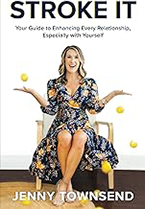 Jenny Townsend’s new book, Stroke It: Your Guide to Enhancing Every Relationship, Especially With Yourself is not a sex manual, although she includes advice on sex in the final chapter. Rather, it’s an inspirational relationships book. Townsend uses the term “stroke it” to reference how we can say and do things to show others we care and they matter to us, and as a result, we can improve all our relationships.
Jenny Townsend’s new book, Stroke It: Your Guide to Enhancing Every Relationship, Especially With Yourself is not a sex manual, although she includes advice on sex in the final chapter. Rather, it’s an inspirational relationships book. Townsend uses the term “stroke it” to reference how we can say and do things to show others we care and they matter to us, and as a result, we can improve all our relationships.
The book is divided into seven fun yet serious chapters, each focused on the type of stroking needed in a different kind of relationship. Probably the most important chapter, Chapter 1, is about how to improve your relationship with yourself. The successive chapters are about how to improve your relationship with your spouse or partner, your employer, your employees, your friends, and your family members, culminating in the most fun chapter, how to stroke it in the bedroom, i.e., how to improve your most significant relationship by improving your sex life.
Despite the play on words, Townsend wrote this book in the aftermath of a very serious situation. For a long time, she felt insecure in her relationship and even accused her spouse of cheating. Eventually, her husband did.
To read more, visit Stroke It.
 Riding One More Wave: A Blue Legacy of Honor and Duty by Bradley Carpenter is a look back at an honorable police officer who went above and beyond to keep the streets of Oakland, California safe in the 1980s.
Riding One More Wave: A Blue Legacy of Honor and Duty by Bradley Carpenter is a look back at an honorable police officer who went above and beyond to keep the streets of Oakland, California safe in the 1980s.
The novel opens with a Prologue by the author who discusses how his good friend, Officer Bobby Jackson, lost his battle with melanoma. When he died, Carpenter took his friend’s diaries and turned them into the following novel about his experiences as a police officer in Oakland, California.
The reader quickly realizes that Officer Bobby Jackson truly cares about the people he is on the streets to protect. The police do not always have the best reputation these days, but reading this novel made me really appreciate the work they do, how they put themselves in danger every day, and how officers like Jackson think outside the box to make at least their section of the world better.
The novel takes place in the early 1980s when drugs were becoming a major concern in California. Officer Jackson and his fellow policemen have their hands full trying to fight crime in the area. The drug dealers go to extremes to protect their territory.
To read more, visit Riding One More Wave.
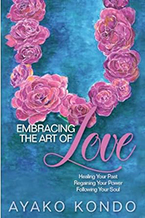 Ayako Kondo’s new book Embracing the Art of Love: Healing Your Past, Regaining Your Power, Following Your Soul offers a simple but profound message: Love is the answer to whatever our question might be, whether it’s how to find happiness, how to heal the past, how to determine what we want for the future, or anything else we might seek. While that may seem like an easy answer, we all struggle with how to find, receive, and give love, and even with just understanding what love is and recognizing it when we see it. Early in the book, Kondo shares a quote from the thirteenth-century Sufi mystic Rumi. It clarifies what we need to know in a nutshell: “Your task is not to seek for love, but merely to seek and find all the barriers within yourself that you have built against it.”
Ayako Kondo’s new book Embracing the Art of Love: Healing Your Past, Regaining Your Power, Following Your Soul offers a simple but profound message: Love is the answer to whatever our question might be, whether it’s how to find happiness, how to heal the past, how to determine what we want for the future, or anything else we might seek. While that may seem like an easy answer, we all struggle with how to find, receive, and give love, and even with just understanding what love is and recognizing it when we see it. Early in the book, Kondo shares a quote from the thirteenth-century Sufi mystic Rumi. It clarifies what we need to know in a nutshell: “Your task is not to seek for love, but merely to seek and find all the barriers within yourself that you have built against it.”
Many of us look for love in all the wrong places. As Kondo reveals, rather than going out and trying to find love, we need to look inside to find what is blocking love from us. It might be limiting beliefs we inherited from parents or our culture. It might be a lack of self-love that makes us think we don’t deserve love from others.
To read more, visit Embracing the Art of Love.
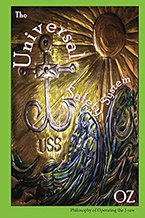 The Universal Safety System by Chuck “OZ” Oslund is a book like you’ve never read before. The author is a chainsaw safety instructor who previously published The Chainsaw Safety System. Many readers bought that book to learn chainsaw safety, but they were also surprised by how philosophical the book was. OZ loves to be philosophical because he believes the rules of chainsaw safety can be applied to various other situations in our lives. In The Universal Safety System, he applies chainsaw safety to our lives in general with surprising and reassuring results.
The Universal Safety System by Chuck “OZ” Oslund is a book like you’ve never read before. The author is a chainsaw safety instructor who previously published The Chainsaw Safety System. Many readers bought that book to learn chainsaw safety, but they were also surprised by how philosophical the book was. OZ loves to be philosophical because he believes the rules of chainsaw safety can be applied to various other situations in our lives. In The Universal Safety System, he applies chainsaw safety to our lives in general with surprising and reassuring results.
The Universal Safety System may not be an easy book to read, but the more effort you put into understanding it, the more you will benefit from it. OZ plays on a lot of biblical language in the book because he feels he was divinely inspired to write it. The subtitle itself contains a play on words. It is an “‘e’-manuel,’” a play on both “manual” and “Emmanuel,” a name for Christ. Rather than use the name Jesus, he prefers Jay, although he also uses acronyms like SOM and JON for Son of Mankind and Jesus of Nazareth. The book is filled with similar wordplay and what at first might even look like typos. Often what looks like a wrong word is intentionally the right one to create an extra layer of meaning.
To read more, visit The Universal Safety System.
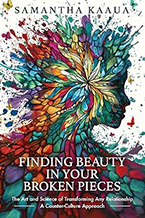 If you are struggling in your marriage, considering divorce, or even having difficulty getting along with a friend or relative, then Finding Beauty in Your Broken Pieces: The Art and Science of Transforming Any Relationship can help you to successfully change your situation. Samantha Kaaua, a marriage therapist and relationship coach, offers practical and sometimes surprising advice about what you can do to change any relationship.
If you are struggling in your marriage, considering divorce, or even having difficulty getting along with a friend or relative, then Finding Beauty in Your Broken Pieces: The Art and Science of Transforming Any Relationship can help you to successfully change your situation. Samantha Kaaua, a marriage therapist and relationship coach, offers practical and sometimes surprising advice about what you can do to change any relationship.
When you read Finding Beauty in Your Broken Pieces, you’ll discover that Samantha really “gets” where you’re at because she’s been there herself. She opens the book with a shocking personal story. The day she went to take her final exam to get her degree so she could become a marriage therapist, she discovered her husband had been lying to her. She pretty much had a meltdown then, wondering how she could help people when her own marriage was on the rocks. Throughout the book, Samantha shares more personal stories of her own marriage and how she and her husband managed to turn around that situation. She admits it wasn’t easy and she is painfully honest about some of the details. Even more surprising, her husband has written the foreword to the book, testifying that the efforts they made did work.
To read more, visit Finding Beauty in Your Broken Pieces.
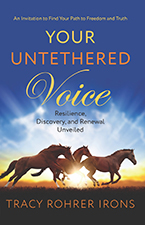 In Your Untethered Voice: Resilience, Discovery, and Renewal Unveiled, Tracy Rohrer Irons shares her personal journey of how she recovered from a childhood accident, learned to live with the disabilities it left her in its wake, and overcame some of the dysfunctional behaviors she adopted to cope with her disabilities growing up. Tracy’s purpose in sharing her story is to help others overcome the feeling she had that they need to hide their true selves, perhaps even unaware they are doing so, and learn to own their voice and true identity.
In Your Untethered Voice: Resilience, Discovery, and Renewal Unveiled, Tracy Rohrer Irons shares her personal journey of how she recovered from a childhood accident, learned to live with the disabilities it left her in its wake, and overcame some of the dysfunctional behaviors she adopted to cope with her disabilities growing up. Tracy’s purpose in sharing her story is to help others overcome the feeling she had that they need to hide their true selves, perhaps even unaware they are doing so, and learn to own their voice and true identity.
Tracy begins by sharing her personal story of how she was hit by a car in 1976 when she was just five years old. The accident resulted in her being in a coma for eight weeks, followed by three months of rehab consisting of physical, occupational, speech, and recreational therapy for a brain injury. Through continued home-based and outpatient therapies, she learned to walk with a walker within a year and was able to walk independently within two years. The trauma of this situation for a small child can only be imagined by readers, but Tracy shares it in detail for us.
What followed for Tracy was the difficulty of growing up not being able to live and function like other children.
To read more, visit Your Untethered Voice.

